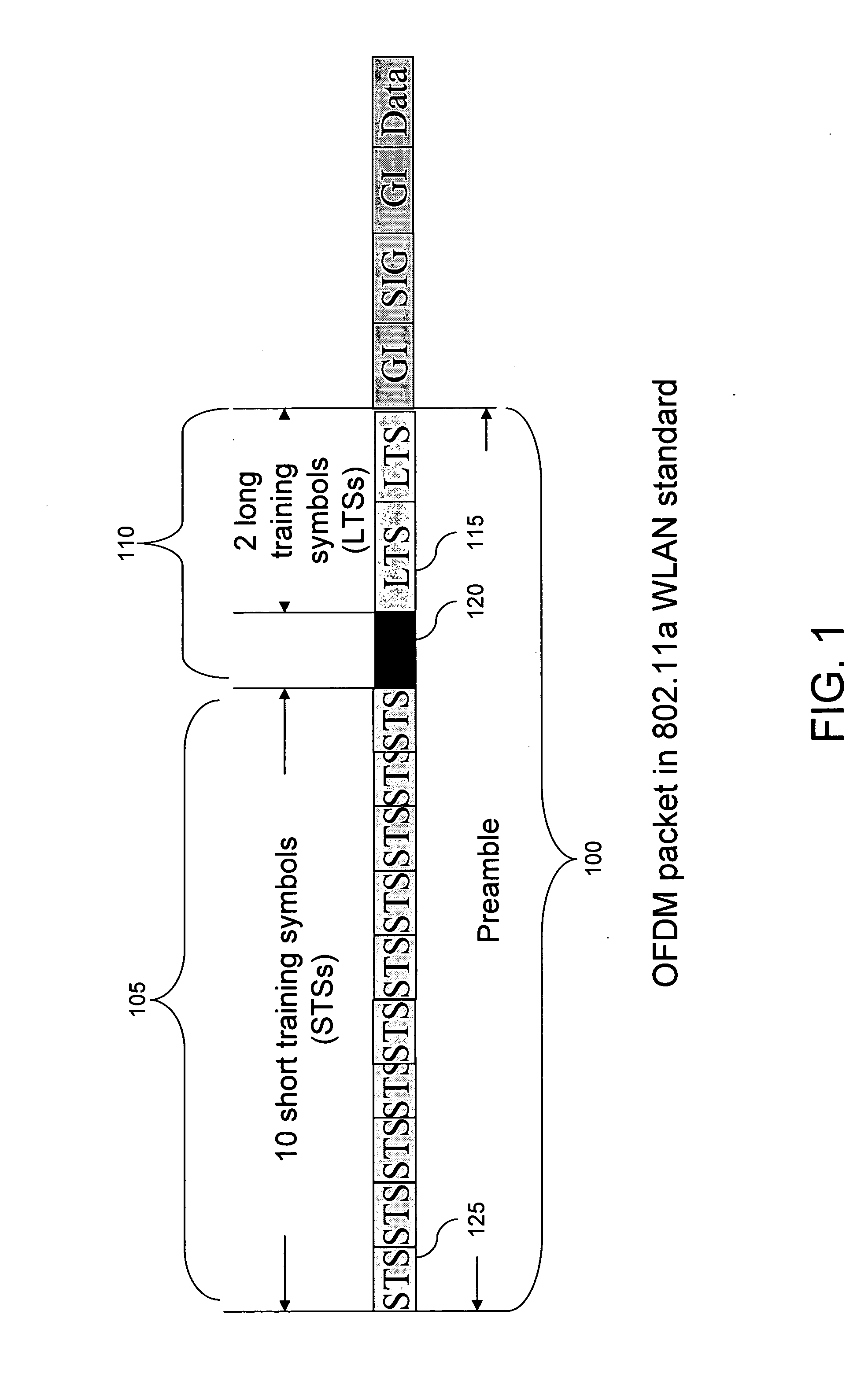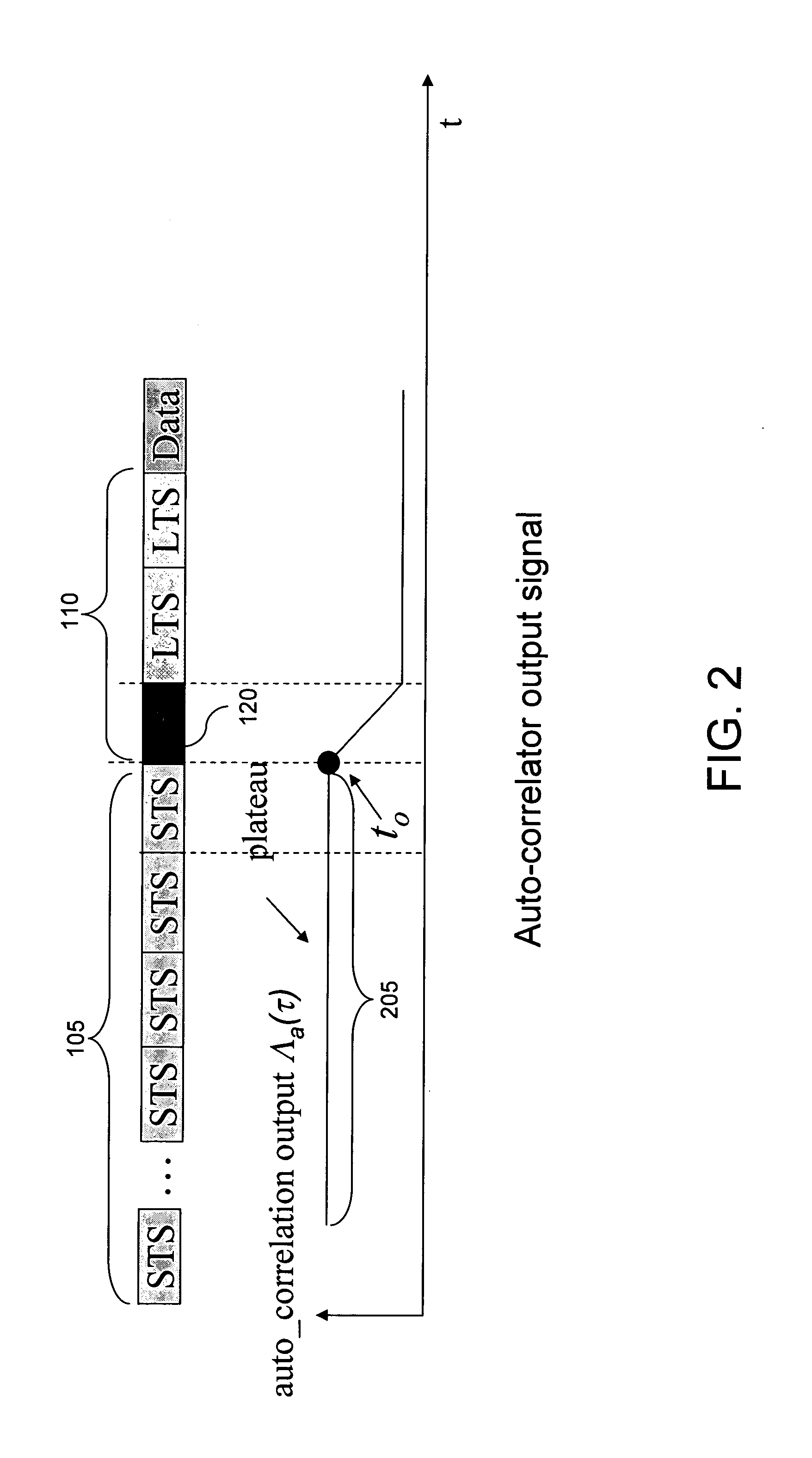Frame timing synchronization for orthogonal frequency division multiplexing (OFDM)
a timing synchronization and orthogonal frequency division technology, applied in the field of signal processing, can solve the problems of synchronization error sensitivity, high complexity of cross-correlation operation, timing ambiguity caused,
- Summary
- Abstract
- Description
- Claims
- Application Information
AI Technical Summary
Problems solved by technology
Method used
Image
Examples
Embodiment Construction
Overview
[0022] Frame timing synchronization techniques for orthogonal frequency division multiplexing (OFDM) based communications are presented that are designed to overcome the problems associated with conventional auto-correlation and cross-correlation based synchronization techniques. In one example, a coarse frame timing synchronization technique includes concatenating a sliding window differentiator with a conventional auto-correlation device to mitigate a timing ambiguity caused by a plateau in the auto-correlator output signal.
[0023] In another example, a fine frame timing synchronization technique includes defining a signal-to-interference ratio (SIR) metric to improve timing precision of a conventional cross-correlation device. As will be described in more detail below, compared to conventional cross-correlation synchronization techniques, this fine frame timing synchronization technique is more robust to multi-paths or pseudo multi-paths caused by use of the cyclic dela...
PUM
 Login to View More
Login to View More Abstract
Description
Claims
Application Information
 Login to View More
Login to View More - R&D
- Intellectual Property
- Life Sciences
- Materials
- Tech Scout
- Unparalleled Data Quality
- Higher Quality Content
- 60% Fewer Hallucinations
Browse by: Latest US Patents, China's latest patents, Technical Efficacy Thesaurus, Application Domain, Technology Topic, Popular Technical Reports.
© 2025 PatSnap. All rights reserved.Legal|Privacy policy|Modern Slavery Act Transparency Statement|Sitemap|About US| Contact US: help@patsnap.com



